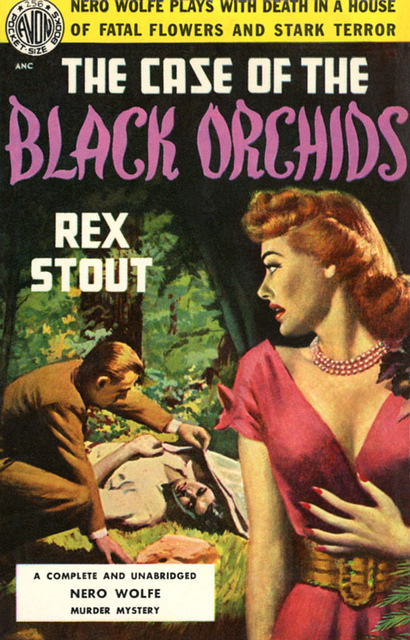Back in early May, I read about a contest for Rex Stout fans called the Black Orchid Novella Award. Being a Stout fan from way back—and yes, you can read that any way you like, and I’m sure you will—I decided to try my hand at a Stout-ish novella.
The brief was clear: a novella, under 17K words, original, unpublished, that conforms to the tradition of the Nero Wolfe series, as in: ‘no overt sex or violence; emphasizes the deductive skills of the sleuth; does not include characters from the original series’.
Easy-peasy, right? Sure. Nothing to
it. Uh huh.
Do you KNOW how many mysteries have
been written? Series, stand-alones, noir, cozy, hard-boiled, classic,
historical, and so on? Mystery series have been set in medieval England—I’m
talking to you, Brother Cadfael—late 19th century Egypt—I love me
some Amelia Peabody—and every other time period you can imagine. And the classic
sleuths have ranged from the Eddie Poe’s C. Auguste Dupin, Doyle’s Holmes,
Sayers’ Lord Peter Wimsey, Allingham’s Campion, Marsh’s Alleyn, Chesterton’s
Brown, Hammett’s N&N Charles….and that just covers a mere hundred years or
so. Since the 1930s—when FER DE LANCE, the first Nero Wolfe, was published…well,
whoa. The idea was staggering that I could add something new and original to a
genre so vast.
But nothing ventured and all that. Living
as I do in the South, near a small town that started out as a cotton mill
village, I thought a mystery set in a mill village might be a workable concept.
After all, I’ve read—obviously—a lot of mysteries and I couldn’t recall any of
them set there. Also, a mill village has always seemed to me much like the
small English villages where Miss Marple roamed: everyone had his or her place
and position in the hierarchy, from the lowliest mill workers, up through the
supervisors, and the owner of the mill being something along the lines of the
local lord.
So, venue decided upon. But then I ran
into another difficulty. A clever plot. Look at Christie; all her plots are
twisty-turny-complex. Could I do something like that?
I reread some Nero Wolfe’s—never a
chore, as all Stout’s books are eminently re-readable—and some of my other
favorite mystery writers, plus some new ones I’d never read, and I discovered
an interesting point: popular mystery series aren’t about the plot, but the
characters. I can’t always remember who done it in my favorites, but I’m always
glad to spend time with folks like Wolfe and Archie and Nick and Nora and
Albert and Roderick.
Hmmm. I appeared to be onto
something. More about that in part two....and I promise it'll be soon.

No comments:
Post a Comment